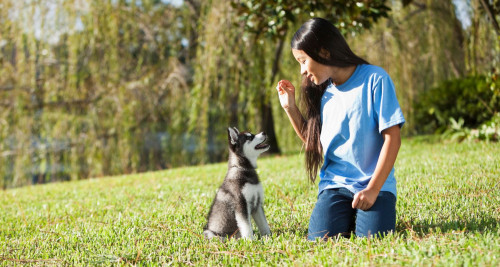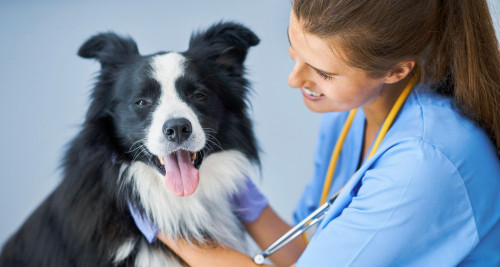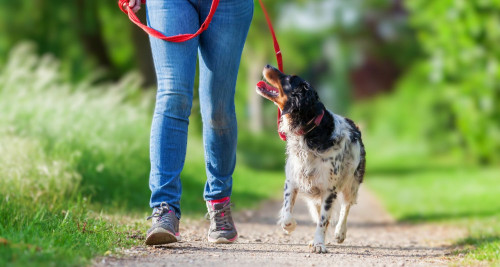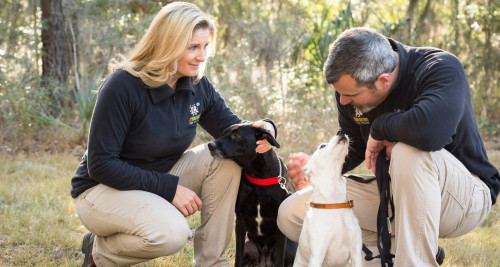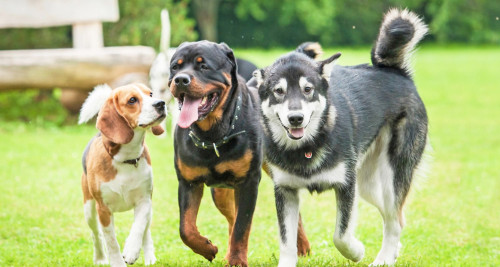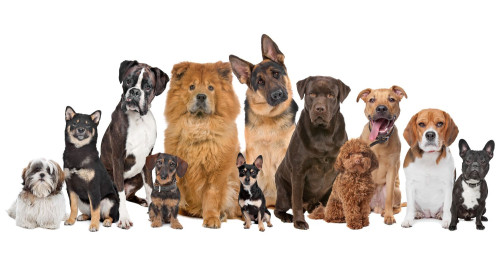The Doberman Pinscher
Breed Traits and Characteristics
According to the American Kennel Club, here are some breed characteristic you can find in Doberman Pinschers.
- Height
26-28 inches (male), 24-26 inches (female)
- Weight
70-100 pounds (male), 60-90 pounds (female)
- Life Expectancy
10-12 years
- Coat Type/Length
Smooth/Short
-
100 Affectionate with Family
-
100 Good with Young Children
-
60 Good with Other Dogs
-
100 Trainability Level
-
100 Energy Level
-
60 Barking Level
-
80 Shedding Level
-
40 Drooling Level
History
The Doberman was bred by Louis Dobermann, a tax collector in the town of Apolda, Germany, around 1890 for a specific purpose – protection from hostilities at collection time. While their exact lineage is largely a mystery, it is believed that Dobermann crossed Rottweilers, German Pinschers, Black and Tan Terriers, and several other breeds to create a dog suitable for his needs.
The Doberman’s intelligence and athleticism led to international recognition as a working dog. The United States Marine Corps selected the Doberman Pinscher as its official service dog, and the breed garnered fame during World War II for their contributions to the war effort. Today’s Dobermans are celebrated show dogs, excel as therapy or service dogs for the disabled, and continue to retain popularity as guard dogs and trustworthy pets.
Doberman Pinscher Personality & Temperament
The Doberman Pinscher possesses an ease of movement and regal appearance befitting their royal status in the canine kingdom. Originally bred as guard dogs, Dobermans are strong and athletic, with boundless energy and keen intelligence that makes them highly trainable. Equally loving and loyal, these compactly-built dogs are very popular pets – provided their owners can cope with their energy level.
Doberman Pinschers have sweet, appealing personalities and stable temperaments. They are extremely loving, loyal, and trustworthy, and even play well with other dogs – provided they can run the show! Dobermans are generally stable and trouble-free. Instances of timidity or aggression can be easily rectified if addressed early in their development, as their high intelligence means they respond well to training.
If you are thinking of purchasing a Doberman, it is important to source from a responsible breeder who is breeding for not only looks, but health and temperament as well. Rescues are also great options for prospective Doberman owners. Contact your local Bark Busters trainer today to learn about great breeders and rescue organizations near you!
Doberman Pinscher Physical Characteristics
Dobermans are a strong, whip-smart breed, with medium-size square bodies. Their appearance projects elegance and nobility, as well as a sense of endurance and speed befitting their energetic nature. They make excellent watch dogs, as they are constantly alert and observing their surroundings.
Class & Color
Class
- Working Group
Color
- Blue & Rust
- Black & Rust
- Black Brindle & White
- Fawn & Rust
- Red & Rust
Size & Life Expectancy
Size
- Medium to Large
- Height: 26-28 inches (male), 24-26 inches (female)
- Weight: 75-100 pounds (male), 60-90 pounds (female)
Life expectancy
- Doberman Pinschers typically live between 10 and 13 years.
Other Traits
- Sleek, graceful physique
- Angulated head with long muzzle, tapered at nose
- Flopped ears and long tail (though some owners crop both)
- Smooth, semi-coarse topcoat and a soft, fine undercoat
Bark Busters Trainer Jeff Drier on the Doberman Pinscher
Doberman Pinschers are renowned for their natural leadership qualities and protective natures – noble traits that can create dangerous situations if they misinterpret human behavior, make errors in judgment, or start to determine who is and isn’t welcome at home on their own.
Case Study
Take King, whose human family included two teenage siblings. Like most brothers and sisters, they would squabble and sometimes roughhouse with each other. King’s protective instincts would kick in, leading him to misinterpret their wrestling as something more serious. King would growl and bark at them, and one day even bit the son when he was wrestling with his sister. He fortunately escaped without serious injury, but it was clear to the family that King needed help.
Our trainer reviewed King’s behavior and developed a plan to teach King that it was the parents’ job, not his, to police the kids. Being a typical Doberman, he was very smart and took to the re-education very quickly. The family soon reported that King had vacated his duties as policeman and was no longer reacting to the teens’ dustups, instead letting the parents handle any disputes at home.
Like any breed, Dobermans can make poor decisions and mistakes in judgment. Your local Bark Busters trainer can quickly help establish new patterns of behavior – often in just a single session.
Tips for Potential Doberman Pinscher Owners
Doberman Pinschers are susceptible to certain health risks. Responsible breeders will screen breeding stock for medical conditions inherent to the breed.
Dobermans are extremely active and require space for play and exercise, making them poor choices for apartment-dwellers.
Early socialization and basic obedience training are important to establishing patterns of good behavior with your Doberman.
The Doberman is an energetic athlete who needs a lot of exercise and free play. Taking your dog for long walks and hikes is great for their wellbeing.
We are always available to help you develop a consistent, compassionate approach to good behavior for your Doberman Pinscher. Learn more about our services and schedule an appointment with one of our trainers today!
Connect with Us!
Need help training your Doberman Pinscher? Call 1-877-500-BARK (2275)or enter your zip code.
Doberman Pinscher Health & Grooming
Health
The breed is usually healthy, but can be susceptible to bloat (a digestive condition), heart ailments like hip dysplasia and enlarged hearts, and a spinal condition called wobbler syndrome. Potential owners should purchase from responsible breeders, who typically genetically test their breeding stock for these issues.
Grooming
Dobermans are brush-and-go-type dogs that require little care for their short coats. A few minutes brushing and one wash per week should be enough to remove the soft, fine undercoat hairs that can shed or contribute an unpleasant smell if left alone. The American Kennel Club recommends monthly nail trimming, regular teeth brushing, and wiping out their ears with a small amount of baby oil on a paper towel every few days.
Tips for Every Dog Owner
Hear from Bark Busters Clients Who Have a Doberman Pinscher
Need Dog Training Assistance with Your Doberman Pinscher? Find Your Local Trainer Now!
CALL TODAY 1-877-500-BARK (2275)
